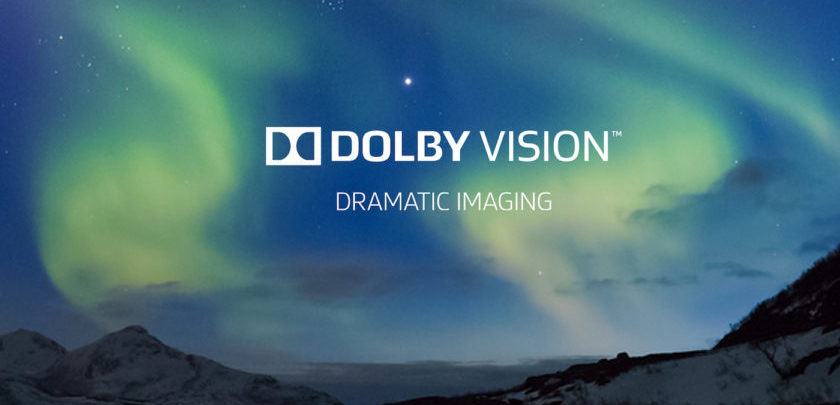M+E Connections

Dolby CEO: Strong Atmos, Vision Adoption Continues
Story Highlights
Despite ongoing challenges created by the COVID-19 pandemic, Dolby saw bright spots in the fiscal third quarter ended June 26 that included continued strong Dolby Atmos and Dolby Vision adoption and a promising reaction to its new Dolby.io application programming interface (API)-based developer platform, according to company CEO and president Kevin Yeaman.
“Our formula for growth has always started with increasing the amount of compelling content available at Dolby,” he said Aug. 3 on an earnings call.
“The Dolby Vision and Dolby Atmos experience in movie and TV content has led to growing adoption across a broad range of devices,” he told analysts. “We are also expanding the Dolby experience areas such as gaming and music that broaden our value proposition and create more opportunities in device categories like mobile, PC and automotive,” he said.
Throughout the pandemic, consumers have been viewing a growing amount of streamed content, and Dolby Vision and Dolby Atmos “continues to be highlighted within the content that matters most to people,” he said.
As examples of that, he pointed to the recent releases of “Hamilton” on the Disney Plus streaming service and the film “Greyhound” starring Tom Hanks on the Apple TV Plus streaming service, each of them available in Dolby. The latter title was originally planned for theatrical release in the spring before being delayed until the summer because of the pandemic and then became a streaming title instead.
Meanwhile, Hotstar, the largest streaming service in India, started to support Dolby Vision for Disney Plus content, Yeaman pointed out.
During Q3, Dolby also “saw several partners adopt Dolby Vision and Dolby Atmos within their products,” he said, noting Apple, which supports Dolby Vision and Dolby Atmos across most of their devices, announced that its AirPods Pro in-ear headphones will support Dolby Atmos with the release of iOS 14.
Sonos also launched the Sonos Arc, that manufacturer’s first soundbar that supports Dolby Atmos, Yeaman noted.
In addition, Free, one of the largest Internet service providers in France, launched its first set-top box to support Dolby Vision and Dolby Atmos and, last month, Chinese consumer electronics manufacturer Xiaomi launched its first TV supporting the combined experience, he said.
Adoption of both Dolby Vision and Dolby Atmos within TVs has “continued to expand globally, most notably in India,” he told analysts, noting: “This quarter, TCL, Sony, OnePlus and Nokia, all announced new TV models in India supporting the combined experience.”
Also, Panasonic expanded its adoption of the new Dolby Vision IQ to additional models this quarter, he said.
In fiscal year 2019, Dolby Vision was included in about 10% of 4K TV shipments and Dolby is now “on track to materially increase that adoption rate for fiscal ’20 with significant growth opportunities still ahead of us,” he told analysts.
Meanwhile, “our strong presence in movie and TV content has enabled the initial adoption of Dolby Vision and Dolby Atmos within PC and mobile devices” also, he said, adding: “Beyond that, we see a significant opportunity to accelerate adoption by enabling more experiences on these devices, including gaming and music.”
Recently, the Tidal music streaming service “significantly expanded the number of devices” that support Dolby Atmos Music to include Dolby Atmos-enabled soundbars and other home theatre equipment, he noted.
“We’re also seeing examples of how Dolby Atmos can create unique experiences across a wide range of music genres,” he told analysts. As examples, he noted that, during Q3, “we saw examples of classical music from John Williams and recordings from the London Philharmonic Orchestra mixing Dolby Atmos,” while the independent label Empire started releasing music in Dolby Atmos from artists including Fat Joe and Remy Ma.
The music being released featuring the “Dolby experience elevates our engagement with partners and strengthens the value proposition for Dolby Atmos in existing device categories such as mobile phones and create new opportunities for us in areas such as automotive and smart speakers,” Yeaman said.
Dolby.io So Far
Dolby is also “beginning to address a growing population of content beyond premium entertainment, most recently with the launch of our developer platform, Dolby.io,” Yeaman went on to say.
Dolby.io, launched in Q3, “enables developers to access Dolby technology to raise the bar on the quality of the media and communications experiences within their apps and services using our APIs,” he noted, adding: “Among our initial customers, we have seen applications across a wide range of use cases, including podcasts, e-learning and telehealth. Beginning a few weeks ago, artists can optimize the quality of their music recordings with mastering on SoundCloud powered by Dolby’s platform. We are excited by the initial reception of Dolby.io and by the potential to bring Dolby to the growing amount of media and communications content that is part of our daily lives.”
Dolby “continues to be well-positioned to navigate through these challenging times,” he also told analysts, adding: “As consumer spending does return, we are confident that with our strong positioning across a broad range of devices and services, we will return to our path of driving revenue and earnings growth.”
While Dolby Q3 revenue “came in at the high end” of its forecast, profit soared to $67.3 million (66 cents a share) from $39.6 million (38 cents a share).
Mobile represented about 33% of total licensing in Q3 and was up by about 65% over last year, “due to higher recoveries and revenues from our patent programs,” according to CFO Lewis Chew.









